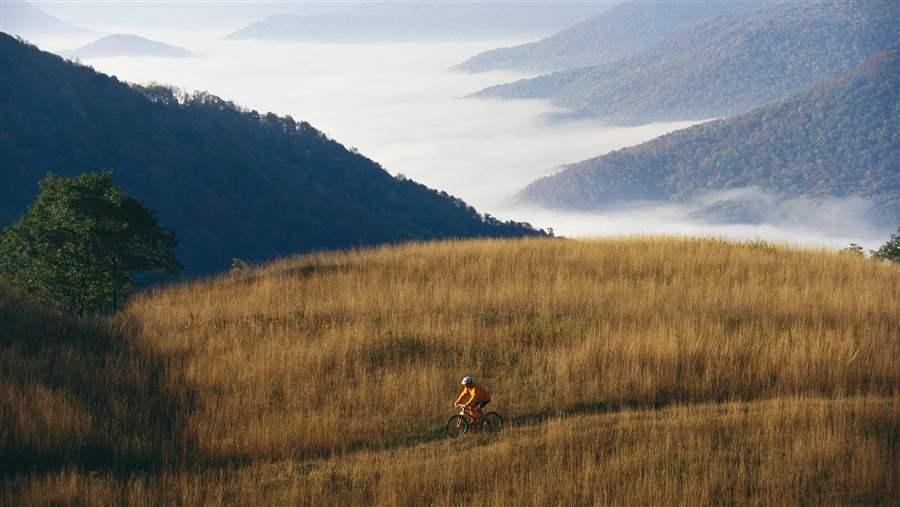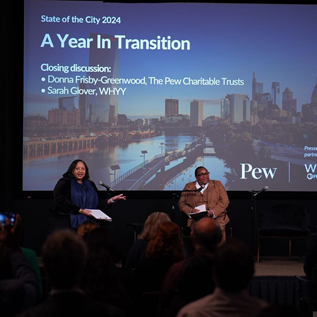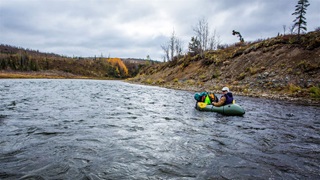Grant Projects are Helping Create Healthier Communities in Appalachia, the South
Bike lanes and neighborhood planning among initiatives

A cyclist rides in a meadow above a fog shrouded valley in Pocahontas County, West Virginia.
© Skip Brown/Getty Images
Appalachia is defined by a rich cultural heritage and a mountainous landscape crisscrossed by thousands of rivers and streams, resources that can be harnessed to develop sectors such as tourism and recreation. However, the region is still beset by economic strains that affect the health of its people. A study published in the journal Health Affairs in August shows that life expectancy in Appalachia is 2.4 years shorter than in the rest of the United States, a gap that has grown during the past 23 years, while infant mortality is 16 percent higher in the region.
The study cited a strong link between persistent, or intergenerational, poverty in the region—which includes West Virginia and parts of 12 other states—and life expectancy. Many factors shape these outcomes beyond access to quality health care, such as behaviors like smoking and substance use, the quality of air and water, education, housing quality and location, social connections, and access to safe spaces for recreation. Since 2015, the POWER Initiative, the Just Transition Fund, and other efforts have worked to improve these factors through community-based development initiatives in the region. In 2016, the Health Impact Project, a collaboration of the Robert Wood Johnson Foundation and The Pew Charitable Trusts, launched its own program to address health equity in Southern and Appalachian states through community-led projects. It is now working with six teams on projects that will conclude this fall.
In Tennessee, the Nashville Civic Design Center is collaborating with local partners to promote sidewalks, bike lanes, and trail networks to enhance community connectivity and increase physical activity. In Scott County, the STAND coalition will use the Citizenship in Action curriculum with students at two high schools to explore the connections between infrastructure and health, and conduct neighborhood health assessments during the fall semester. At the end of the semester, students will present the results and showcase projects aimed at improving the built environment at a town hall event for local decision-makers and residents.
In Alabama, the Regional Planning Commission of Greater Birmingham and the Edge of Chaos collaborative at the University of Alabama, Birmingham are developing Shape Bham, a health scorecard that will be integrated into 20 neighborhood plans for land use, zoning, transportation improvements, parks, trails, housing, and economic development. Besides increasing community engagement in regional planning initiatives, this effort will give decision-makers important data on neighborhood conditions that affect health.
As these projects conclude, the Health Impact Project will continue to direct funds where opportunities exist to improve the social and economic factors that shape health. Through a call for proposals for health impact assessment grants, it will support organizations seeking to improve health equity through evidence and community engagement.
The Health Impact Project is committed to closing avoidable gaps in life expectancy and eliminating differences in health based on geography and economic and social factors. It imagines a future where decision-makers consider health when making choices on economic development, education, housing, and other policies.
Bethany Rogerson is a manager and Emily Bever is an associate for the Health Impact Project.









